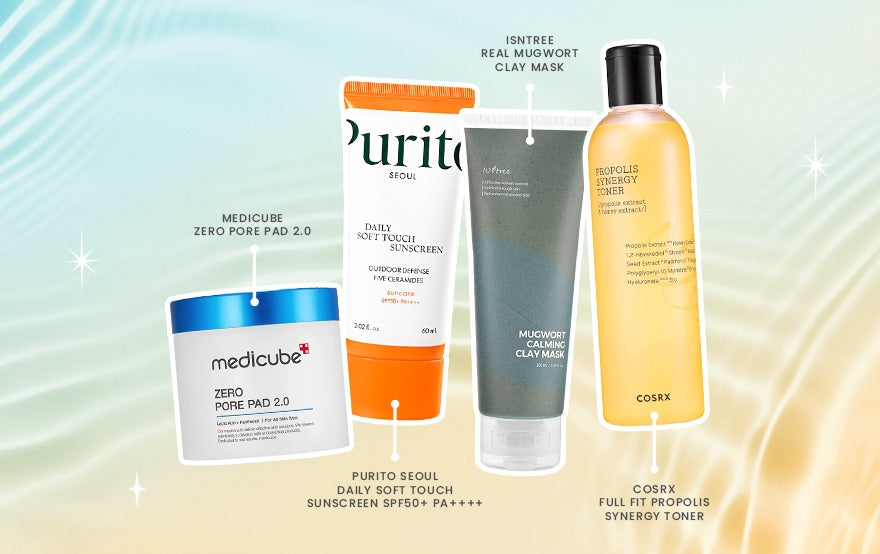
Cut Shine Quick: How to Control Excess Oil and Greasiness
|
|
Time to read 3 min
|
|
Time to read 3 min

Excess sebum production can be a frustrating skincare concern, leading to a shiny, greasy complexion that feels difficult to manage. However, with the right approach and targeted products, you can effectively regain control over your skin's oil levels and achieve a balanced, radiant glow. In this comprehensive guide, we'll explore the root causes of excess sebum and share a step-by-step routine to help you cut the shine and achieve a healthier, more refined skin appearance.
Sebum is a natural oil produced by the skin's sebaceous glands, and it plays a crucial role in maintaining the skin's barrier function and overall health. However, various factors can disrupt the delicate balance of sebum production, leading to an overabundance of oil on the skin's surface.
One of the primary contributors to excess sebum is environmental factors, such as changes in weather and climate. Hot, humid conditions can stimulate the sebaceous glands to produce more oil, resulting in a shiny, greasy complexion. Conversely, dry, cold environments can also trigger the skin to overcompensate by generating additional sebum.
Hormonal changes, particularly during puberty, pregnancy, or menopause, can significantly impact sebum production. Fluctuations in hormones like testosterone and androgen can cause the sebaceous glands to go into overdrive, leading to an oily, blemish-prone complexion.
Stress, both physical and emotional, can also contribute to excess sebum production. When the body is under stress, it releases cortisol, a hormone that can stimulate the sebaceous glands. Additionally, certain lifestyle factors, such as a poor diet high in refined carbohydrates and unhealthy fats, can exacerbate the issue.
To effectively manage excess sebum and maintain a balanced, healthy complexion, it's essential to implement a tailored skincare routine that addresses the root causes. Let's explore the key steps to take:
Proper cleansing is the foundation of any effective skincare routine, especially for those dealing with excess oil. Begin with a gentle, oil-based cleanser that can effectively remove makeup, dirt, and impurities without stripping the skin. Follow up with a second, water-based cleanser that is formulated to target and control sebum production.
Suggestion -
Exfoliation is a crucial step in managing excess sebum, as it helps to slough off dead skin cells and unclog pores. Incorporate a gentle chemical exfoliant, such as one containing alpha-hydroxy acids (AHAs) or beta-hydroxy acids (BHAs), into your routine a few times a week to keep your complexion clear and refined.
Suggestion -
[ROUNDLAB] 1025 Dokdo Cleanser
Certain skincare ingredients have been shown to be particularly effective in controlling excess sebum. Look for products containing:
COSRX - Full Fit Propolis Synergy Toner
Contrary to popular belief, excess sebum can sometimes be a response to dehydration. Opt for lightweight, oil-free moisturizers and serums that provide adequate hydration without clogging pores or triggering further oil production.
Suggestions -
Torriden - DIVE-IN Low Molecular Hyaluronic Acid Soothing Cream
Sun protection is essential for all skin types, and for those dealing with excess sebum, a matte-finish sunscreen can be a game-changer. Look for formulas that contain sebum-absorbing ingredients, such as silica or rice starch, to help maintain a shine-free, matte complexion throughout the day.
Suggestions -
[Beauty Of Joseon] Relief Sun : Rice + Probiotics
While a targeted skincare routine is essential, managing excess sebum production requires a holistic approach that addresses the underlying causes. In addition to your customized skincare regimen, consider the following lifestyle adjustments:
By addressing the root causes of excess sebum through a comprehensive approach, you can achieve a more balanced, radiant complexion that is free from unwanted shine and greasiness. Remember, every skin type is unique, so be patient and adaptable as you discover the perfect routine for your individual needs.